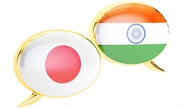COMMENTS / COLUMNISTS
India needs FTAs to become smartphone manufacturing center

Illustration: Xia Qing/GT
More Chinese phone makers are considering relocating their production bases to the Indian market, which could underpin its falling economy and give a boost to the country's "Make in India" plan. However, without lowering its trade barrier and actively participating in free trade arrangements, any such benefits could be limited and short-lasting.India has overtaken the US to become the world's second-largest smartphone market following China, and is likely to turn into a new battleground for phone makers worldwide. Some Chinese mobile phone brands are planning to manufacture more localized items in India after they have won over the Indian smartphone market with the high quality and affordable prices of their products.
Chinese smartphone vendor OPPO plans to produce 100 million handsets in India in 2020, open high-end flagship stores and launch active retail promotions in the country to encourage more consumers to try out its flagship devices, according to media reports quoting a company executive.
India could use the boost amid its current economic winter. The nation has experienced a decline in GDP growth for six consecutive quarters - its longest continuous decline in 23 years. India's GDP growth rate last quarter fell to 4.5 percent, its lowest rate in more than six years. Chinese companies bringing their assembly lines to India are exactly what the country needs to recover its economic momentum and revive its "Make in India" scheme.
However, this is far from sufficient. India should have a more long-term vision. Growing into a manufacturing base for handset orders in Asia - and therefore the world - and developing an export-oriented economy are more desirable goals for the country than simply manufacturing for the local market. In order to become a manufacturing base and an export-oriented economy, India needs to obtain preferential tariff treatment from other major Asian markets.
Vietnam's success story over recent years has proven that bringing down tariff and non-tariff barriers is necessary to thrive. The country has been part of many free trade agreements (FTAs) with major economies including the US and Japan. And there are more to come with countries such as Israel, Pakistan and Ukraine. It also is an active member of the Regional Comprehensive Economic Partnership (RCEP).
Due to the benefits that come with FTAs, Vietnam has attracted foreign investment for factories making electronics including smartphones. Such investment has helped the country take a step up in the global value chain.
India, which has signed a limited number of FTAs, can learn from Vietnam's experience. Joining the RCEP is now an opportunity for India. If India can keep an open mind and embrace the globalization trend, the country will enable itself to renew its economic steam. Otherwise, the ship will have long set sail by the time India realizes it is too late.
The author is a reporter with the Global Times. bizopinion@globaltimes.com.cn

